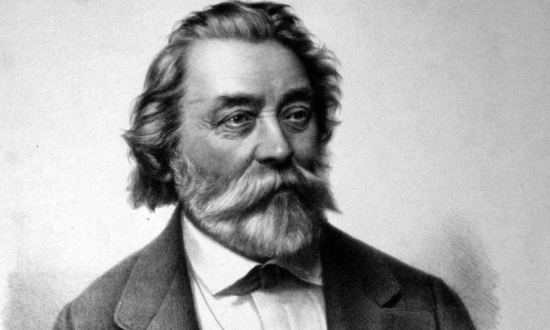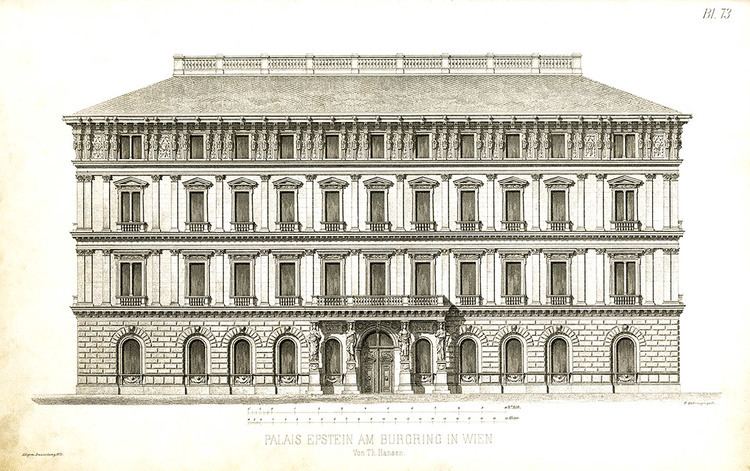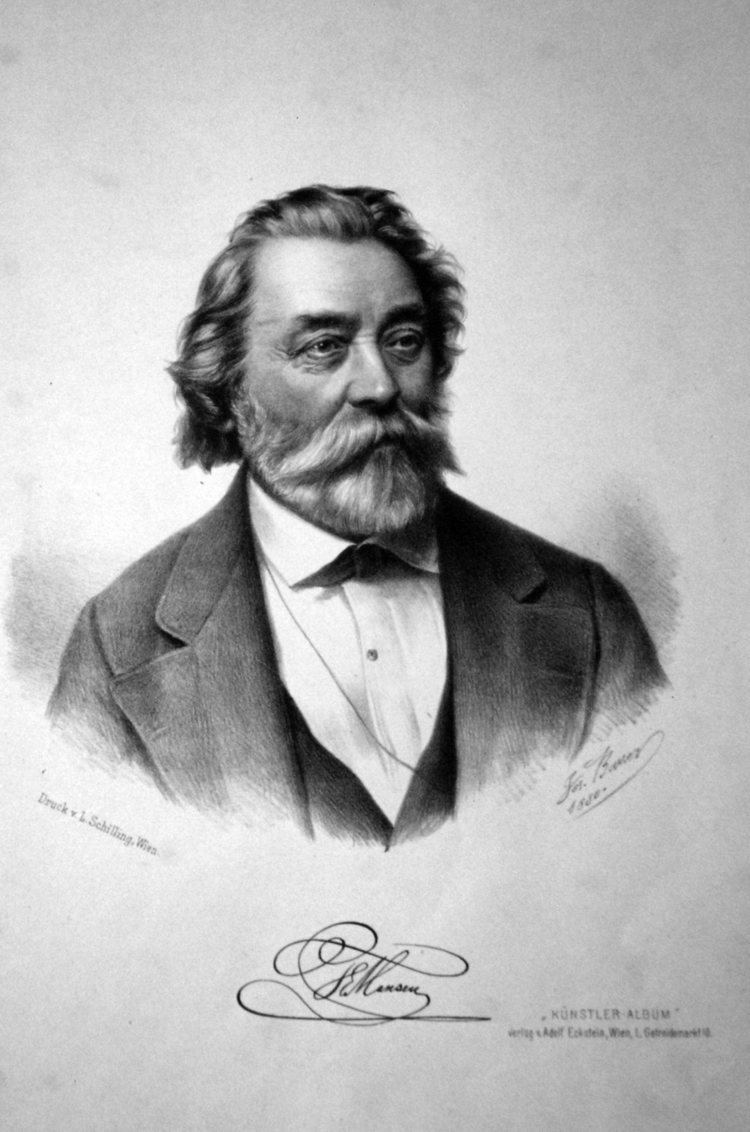Name Theophil Hansen Siblings Christian Hansen | Role Architect Awards Royal Gold Medal | |
 | ||
Structures Austrian Parliament Building, Wiener Musikverein, Zappeion, Naturhistorisches Museum, Hotel Grande Bretagne Similar People Christian Hansen, Ernst Ziller, Heinrich von Ferstel, Gottfried Semper | ||
Architekt theophil hansen a hybn momenty spole ensk ch vztah v brn
Baron Theophil Edvard von Hansen ( [ˈteːofiːl fon ˈhanzn̩]; original Danish name: Theophilus Hansen [teoˈfiːlus ˈhanˀsn̩]; 13 July 1813, Copenhagen – 17 February 1891, Vienna) was a Danish architect who later became an Austrian citizen. He became particularly well known for his buildings and structures in Athens and Vienna, and is considered an outstanding representative of neoclassicism.
Contents
- Architekt theophil hansen a hybn momenty spole ensk ch vztah v brn
- Athens The Academy
- Biography
- Work
- Gallery
- References
Athens The Academy
Biography

After training with Karl Friedrich Schinkel and some years studying in Vienna, he moved to Athens in 1837, where he studied architecture and design, with a concentration and interest in Byzantine architecture. During his stay in Athens, Hansen designed his first building, the National Observatory of Athens and two of the three contiguous buildings forming the so-called "classical trilogy", namely the Academy of Athens and the National Library of Greece, the third building of the trilogy being the National and Capodistrian University of Athens, which was designed by his brother Christian Hansen. The Greek-Austrian Georgios Sinas (who donated the observatory) called Hansen 1846 to Vienna, where Hansen took up an apprenticeship with noted Austrian architect Ludwig Forster.

In his early works, such as the museum at The Arsenal in Vienna, Hansen was still rather aligned to a more romantic style. In later years, he became the most outstanding representative of Renaissance-inspired historicism (Neo-Renaissance), which also came to be known as Viennese-style. This style extended into the smallest details of the interior design and partially accepted the courses of a synthesis of the arts.

Along with Forster and many others, Hansen was one of the most important and influential architects of the Viennese Ringstrase. His most famous work is the Austrian Parliament building, which was created in the style of an ancient, neo-classic temple, and serves to refer to the Greek beginnings of democracy. Hansen was originally a staunch critic of the Classical style that was taught to him at the Copenhagen Academy. Over the years, however, he came to incorporate Classical elements into his forms. Bauleiter on this project was Hans Auer, who would go on to win the competition for the Swiss Bundeshaus.

Hansen's famed Musikverein in Vienna is one of the most notable concert halls in the world; a concert hall whose design and acoustics are often admired and copied in present-day music houses.

Hansen worked together with Viktor Pilz and Carl Rahl, as well as with Otto Wagner. In 1884 Emperor Franz Joseph honoured Hansen with a barony in the Austrian nobility and he was since styled "Freiherr von Hansen".
